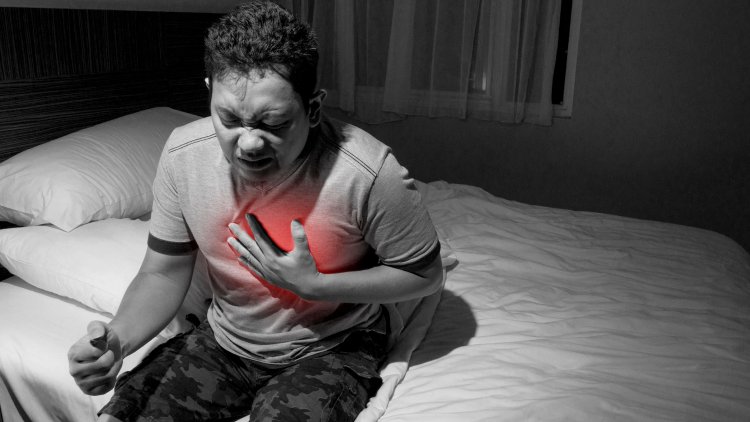Surviving Heart Attacks: Myocardial Infarction in Focus
Myocardial infarction, commonly known as a heart attack, is a critical medical emergency that occurs when blood flow to a part of the heart muscle is obstructed, leading to tissue damage or death due to oxygen deprivation. This condition typically results from the rupture of a plaque deposit (atherosclerosis) within the coronary arteries, which are crucial for supplying oxygen-rich blood to the heart.

Causes and Risk Factors
Myocardial infarction is primarily caused by the narrowing or complete blockage of coronary arteries due to atherosclerosis, influenced by several risk factors:
- Smoking: Tobacco smoke accelerates the formation of arterial plaques and damages blood vessel walls.
- High Blood Pressure (Hypertension): Elevated blood pressure strains the heart and promotes the development of atherosclerosis.
- High Cholesterol Levels: Increased LDL ("bad") cholesterol contributes to the buildup of plaques within coronary arteries.
- Diabetes: Poorly managed diabetes damages blood vessels and increases the risk of cardiovascular disease.
- Obesity and Sedentary Lifestyle: Excess weight and physical inactivity are linked to higher cholesterol levels, hypertension, and diabetes.
- Family History: Genetic predisposition can increase susceptibility to coronary artery disease.
- Age and Gender: Men over 45 and postmenopausal women are at higher risk.
- Stress: Chronic stress contributes to high blood pressure and exacerbates other cardiovascular risk factors.
Symptoms
Symptoms of a heart attack can vary widely, but typically include:
- Chest Discomfort: Pressure, tightness, pain, or a squeezing sensation in the center of the chest.
- Radiating Pain: Discomfort spreading to the shoulders, arms, back, neck, jaw, or abdomen.
- Shortness of Breath: Difficulty breathing or rapid breathing, often accompanied by chest discomfort.
- Other Symptoms: Nausea, vomiting, indigestion, sweating, lightheadedness, or anxiety. Women and older adults may experience atypical symptoms.
Diagnosis
Diagnosing a heart attack involves thorough assessment and testing:
- Electrocardiogram (ECG/EKG): Records the heart's electrical activity, identifying specific patterns indicative of a heart attack.
- Blood Tests: Measure cardiac enzymes like troponin released when heart muscle cells are damaged.
- Echocardiogram: Uses sound waves to create images of the heart, assessing its structure and function.
- Coronary Angiography: Invasive procedure using contrast dye and X-rays to visualize blockages in coronary arteries.
Treatment
Immediate treatment aims to restore blood flow and minimize heart muscle damage:
- Medications: Include aspirin and other antiplatelet drugs to prevent further clotting, thrombolytics to dissolve clots, and nitroglycerin to improve blood flow and relieve pain.
- Procedures: Angioplasty with stenting to open blocked arteries, or coronary artery bypass grafting (CABG) for severe blockages.
Recovery and Rehabilitation
Post-heart attack care involves:
- Medication: To manage conditions such as hypertension, high cholesterol, and diabetes.
- Lifestyle Changes: Quitting smoking, adopting a heart-healthy diet, regular exercise, weight management, stress reduction, and participation in cardiac rehabilitation programs.
- Emotional Support: Coping with the emotional impact of a heart attack and managing stress effectively.
Prevention
Reducing the risk of heart attacks includes:
- Healthy Lifestyle Choices: Maintaining a balanced diet low in saturated fats and cholesterol, regular physical activity, weight management, and stress reduction.
- Medical Management: Controlling blood pressure, cholesterol levels, and diabetes through medication and regular monitoring.
- Avoiding Risk Factors: Quitting smoking and effectively managing conditions like hypertension.
In conclusion, Myocardial infarction remains a significant global health concern, but advancements in treatment and prevention have improved outcomes. Recognizing symptoms, seeking immediate medical attention, and adopting a heart-healthy lifestyle are crucial steps in reducing the incidence and impact of heart attacks.
Disclaimer
The information provided in this article is for educational purposes only and should not be considered medical advice. If you have any health concerns or are experiencing symptoms, it is important to consult with a healthcare professional, such as a doctor or clinic, for proper diagnosis and treatment. Always seek the advice of your doctor or other qualified health provider with any questions you may have regarding a medical condition. Do not disregard professional medical advice or delay in seeking it because of something you have read in this article.
Hashtags
#HeartHealth #MyocardialInfarction #HeartAttackPrevention #HealthyLiving #CardiovascularHealth
What's Your Reaction?





















